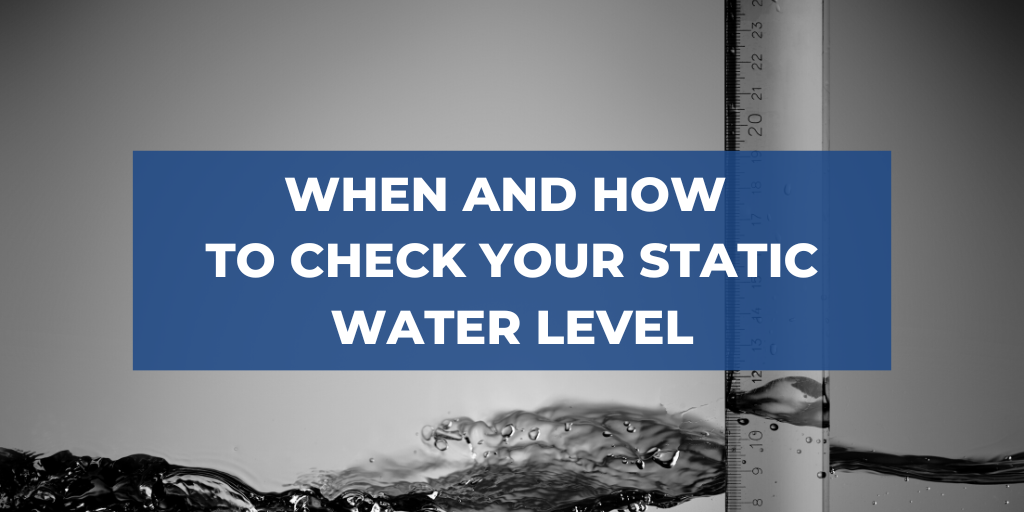Is my well water level too low? This is a question you may have asked yourself (or your well professional). The water level in your well changes throughout the year, as does the groundwater level in your area. Change is normal, but what happens if the water level dips too low? Tracking your water level isn’t a requirement as a private well owner, but it can be useful. We’ll share all about why, when, and how to keep track of your static water level.
What is Static Water Level?
Your well water level has three standard levels: static, pumping, and recovery. Static water level refers to the level of the water in the well when the pump is inactive (and has been inactive for several hours). This is the most realistic measure of the water level in the aquifer you get your water from.
Pumping water level is the level of water in the well while water is actively being pumped. The pumping process forms a cone of depression in the well, known as drawdown. The final water level phase is recovery. During recovery, the drawdown has stopped, but the water hasn’t yet returned to a static level.
It’s important to understand these water level distinctions. If you measure your well water during pumping, you won’t get an accurate picture of the water level in your aquifer. Professionals suggest testing your water level during the static phase unless trying to determine if there is an issue with your well pump.
When to Test Your Water Level
By testing your water level in the static phase at different times of the year, and over the course of several years, you begin to see a pattern. Groundwater levels decrease and replenish at specific times of the year.
But you may also begin to see trends in water levels related to climate change. For example, spring and summer snowmelt in years past may have caused higher water levels than in recent years. Measuring static water levels can help us see those patterns!
Private permit-exempt well owners in Washington State aren’t required to test their well water levels. This is because the Department of Ecology serves to monitor groundwater levels in the state. They currently maintain about 420 wells around Washington and collect data to provide to the National Groundwater Monitoring Network. This data not only helps our region manage groundwater levels and distribution, but it also supports a larger study of groundwater in the country.
Other projects that help us understand groundwater levels include one organized by the United States Geological Survey. The USGS groundwater database for Washington State includes a collection of data from public, private, government, and professional organizations and individuals. They hold static water level data from over 72,000 wells and sites across the state. The website does clarify that not all the data can be confirmed for accuracy. However, private well owners who wish to add their own static water level data can help provide a clearer picture of water levels in our state.
Apart from collecting data, you may have your own reasons for testing your static water level. Decreased water flow is a significant reason to check your well water levels. A drop in water level during pumping, but not while static, could indicate an issue with the well. However, a low water flow but sufficient water level during pumping could indicate an issue with the pump. Both are good reasons to keep an eye on your water level.
How to Test Your Water
If you choose to test your static water level, the best and easiest way to do so is by using an electric depth gauge. These professional devices have an electrode at the end of two wires that beeps when it detects or reaches the water. Electric depth gauges can be rather expensive, so they aren’t always the practical choice if you’re simply measuring your water level out of curiosity.
Other methods of measuring static water level include attaching a weight to the end of a fishing line or a very long tape measure. You can lower the line or measure into the well until the weight hits the water. Then either mark and measure the length of the fishing line or look at the tape measure to determine the water level.
If you’re curious about the level of your aquifer but don’t want to drag out the tape measure, there are other ways to determine your well water level. Exploring the USGS groundwater data can help give a better understanding of groundwater levels in your area.
You can also use the Department of Ecology’s groundwater data search engine to find any existing groundwater data in and around your region.
Have you ever tested the static water level of your well? Share your experience with us!

